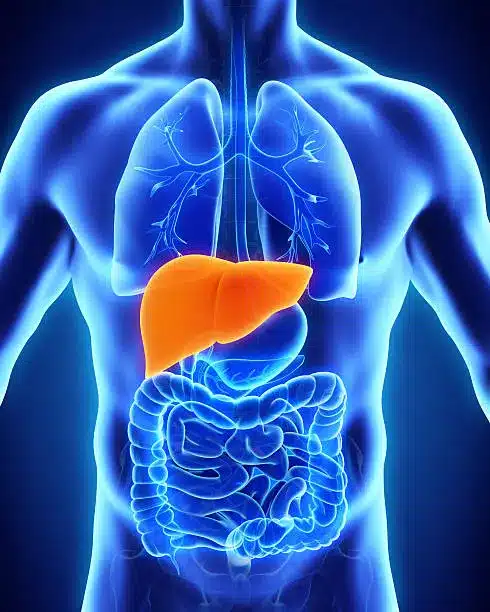Fiji Kava Myths - The Top 3
Kava is a traditional drink that has been consumed in the Pacific for centuries, especially in Fiji where it is known as “yaqona” or “grog”. Despite its cultural significance, kava has been subject to numerous myths and misconceptions, which have damaged the kava industry in Fiji. These misunderstandings range from claims that only Pacific Islanders are allowed to drink kava, to the belief that kava causes liver damage and kava dermopathy, a condition believed to be related to kava consumption. In this article, we will tackle these three main kava myths and provide accurate information to dispel the rumors. By doing so, we hope to support the kava industry in Fiji and promote kava as a safe and culturally significant drink.
Only people from the Pacific are allowed to drink kava

To debunk the myth that only people from the Pacific are allowed to drink kava, it is essential to understand the cultural significance and historical context of kava consumption. Kava, also known as “yaqona” or “grog” in Fiji, holds deep roots in Pacific Islander traditions and ceremonies. However, the idea that only Pacific Islanders have the right to drink kava is a misconception that stems from misinformation and cultural appropriation.
According to sources like DrugScience.org.uk, Pacific peoples take pride in their culture and welcome others to partake in kava consumption. The myth that only Pacific Islanders are allowed to drink kava is often perpetuated by those in the ‘culture industry’ as a reaction to criticism of exploitative practices and cultural appropriation. It is crucial to recognize that Pacific peoples have been sharing kava with non-Pacific individuals in culturally-informed settings, fostering a sense of community and connection through the shared experience of kava consumption.
Furthermore, the notion that kava should only be consumed by Pacific Islanders overlooks the economic impact and livelihood of small-holder Pacific farmers who rely on kava exports. By restricting kava consumption to a specific group, it could potentially harm the industry and diminish the earnings of those involved in kava farming and production. Pacific export earnings and the livelihoods of small-holder Pacific farmers benefit from the global appreciation and consumption of kava by people beyond the Pacific region.
Additionally, the myth that only Pacific people are allowed to drink kava fails to acknowledge the cultural exchange and mutual respect that occurs when individuals from diverse backgrounds engage in kava rituals. The idea of exclusivity contradicts the inclusive nature of kava consumption, which has been embraced by both Pacific and non-Pacific peoples in shared spaces. By participating in culturally appropriate kava practices, individuals outside the Pacific region can contribute to the preservation and celebration of kava’s cultural significance.
In conclusion, the myth that only people from the Pacific are allowed to drink kava is unfounded and overlooks the cultural exchange, economic importance, and communal aspects of kava consumption. By recognizing and debunking this misconception, we can promote a more inclusive and respectful approach to kava consumption, honoring its roots while inviting others to partake in the rich traditions surrounding this cherished beverage.
Kava Causes Liver Damage

The myth that kava causes liver damage is one that has been widely perpetuated, but it is important to examine the scientific evidence in order to debunk this misconception. By referencing the information provided from the article on KavaFacts.substack.com, we can address the eight reported factors commonly associated with liver injury from kava use and highlight the lack of substantive evidence supporting the claim.
One of the factors mentioned is the misidentification of cultivar variation. Some have suggested that different cultivars of the kava plant contain varying levels of toxic constituents, but a study by Lechtenberg et al. (2008) found that pipermethystine, an alkaloid often implicated in liver toxicity concerns, is not toxic in any animal models at levels that could be consumed, even with non-noble extracts. This study challenges the notion that differences in pipermethystine levels across various kava plant parts contribute to liver issues reported in the past.
Another factor is the use of inappropriate plant parts. The article explains that this concern is based on the belief that pipermethystine, found in the upper portion of the kava plant, is toxic. However, current research suggests this is not the case.
Adulteration and contamination of kava products have also been raised as potential causes of liver injury. While there were clusters of adverse event reports related to kava between 1998 and 2003, no new hepatotoxicity-related events have been reported in the last two decades. Concerns regarding fungal contamination, such as aflatoxins, exist, but the article acknowledges that no reported cases have been linked to kava in recent years.
Prolonged treatment duration and daily overdose of kavalactones, the active compounds in kava, lack empirical evidence to support liver toxicity claims. The article states that kava has been consumed for millennia without health issues, and there is no specific treatment duration associated with sudden increases in liver-related problems.
Co-medication with other substances and alcohol use are two factors often cited as potential contributors to liver damage from kava consumption. However, the article emphasizes that the concentrations used in studies suggesting such interactions are unrealistic and not reflective of human consumption scenarios. While caution is advisable when combining alcohol and kava due to the known liver toxicity of alcohol, no convincing evidence exists to suggest liver toxicity specifically from combining the two.
Lastly, preexisting liver disease has not been studied in relation to kava consumption as a comorbidity. Any preexisting liver disease would be considered a separate condition rather than a direct result of kava consumption.
Overall, when examining the scientific literature and evidence provided, many of the factors traditionally associated with liver injury from kava use lack rigorous support. While caution is still advisable, particularly regarding adulteration and contamination, the claim that kava causes liver damage is not substantiated by empirical data. It is essential to rely on accurate information and research to debunk and dispel this myth surrounding kava’s safety.
Fiji Kava is weaker than Vanuatu kava

The myth that Fiji kava is weaker than Vanuatu kava is a common misconception that lacks a solid foundation in terms of scientific evidence and traditional practices. To debunk this myth, it is important to explore the historical significance, cultivation methods, and chemical composition of kava from Fiji and Vanuatu to provide a more accurate understanding of their potency and effects.
Firstly, it is crucial to acknowledge that both Fiji and Vanuatu have a rich history of kava consumption, with kava playing a central role in social, ceremonial, and medicinal contexts in both island nations. The cultural significance of kava is paramount in both societies, and the quality and strength of kava are highly valued by the communities that cultivate and consume it.
In terms of cultivation practices, both Fiji and Vanuatu have unique environments and soil conditions that influence the growth and potency of kava plants. While there may be variations in the specific cultivars and strains grown in each country, these differences do not necessarily equate to one region producing inherently weaker kava than the other. Quality kava products rely on factors such as plant maturity, proper processing techniques, and storage methods rather than the geographical origin alone.
Furthermore, the chemical composition of kava can vary depending on factors such as cultivar, plant part used, preparation method, and storage conditions. The presence of kavalactones, the active compounds responsible for kava’s effects, is what determines the potency of kava. Both Fiji and Vanuatu kava can contain similar levels of kavalactones when grown, harvested, and processed correctly, dispelling the notion that one is inherently weaker than the other.
It is essential to understand that the perception of strength or potency of kava is subjective and can vary based on individual tolerance, metabolism, and overall health. Factors such as dosage, preparation method, and personal sensitivity to kava can influence the perceived strength of the effects experienced by an individual, rather than a definitive difference in potency between Fiji and Vanuatu kava.
In conclusion, the myth that Fiji kava is weaker than Vanuatu kava is not supported by substantial evidence and overlooks the complexities involved in kava cultivation, processing, and consumption. Both Fiji and Vanuatu have a long-standing tradition of producing high-quality kava with varying levels of potency based on numerous factors beyond geographical origin alone. By recognizing the cultural significance and chemical composition of kava from these regions, we can debunk the myth and appreciate the unique qualities of kava from both Fiji and Vanuatu without assigning one as inherently weaker than the other.
